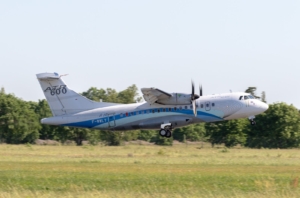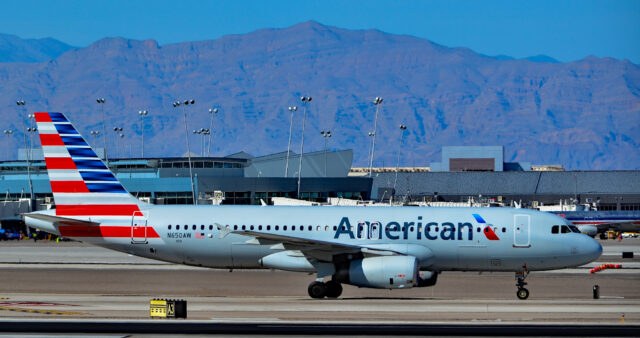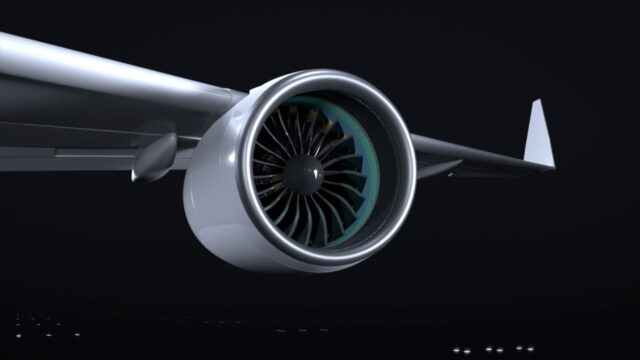ATR abandons ATR 42-600S STOL variant
November 14, 2024

ATR said that: “Following an extensive market review and in light of lingering tensions on its supply chain,” the company had decided to focus its efforts on further boosting the competitiveness of its existing product portfolio.
The company’s comprehensive review of the market, technological developments and future projections had showed a reduced addressable market for the ATR 42-600S variant compared to the initial forecast. This was partly a result of runway extensions (or the construction of nearby alternative airports) in key markets (especially in Southeast Asia) reducing the demand for STOL-capable aircraft.
The ATR42-600S STOL (Short Take-Off and Landing) version was formally launched in 2021. The new variant was intended to operate from runways as short as 800m with 40 passengers on board in standard flight conditions (15°C outside air temperature, sea level, from a dry paved runway) over a route of 200 nm. It has been estimated that around 500 airports have an 800-1,000 m runway (suitable for the ATR 42-600S), and that the new variant would expand ATR’s addressable market by 25%.
The ATR 42-600S promised to be the best performing aircraft in this segment, and to bring increased regional connectivity and connecting more remote communities.
The definitive ATR 42-600S introduced a larger rudder, giving better low speed controllability, improved spoilers, an autobrake system and its increased performance Pratt & Whitney Canada PW127XT-L engine allowed pilots to select between ATR 42 and 72 engine ratings, allowing the aircraft to use increased power for STOL operations, or operate with less power on longer runways.
The original ATR 42-600 prototype F-WWLY (811) flew for the first time in its modified ATR 42-600S STOL form (which was described as a ‘partial configuration’) from Toulouse, Francazal Airport on 11 May 2022, making a two hour and 15 minute maiden flight.

Following successful completion of this first flight, new functionalities were tested one at a time, starting with the MFC-NG (Multifunctional Computer New Generation), and then the autobrake, ground spoiler operation, and increased take off rating systems. The new larger rudder was added in late 2023.
Certification of the ATR 42-600S had once been expected during the second half of 2022, with first deliveries expected soon afterwards. Certification slipped as a result of minor design changes.
Some 21 aircraft were ordered by various customers before cancellation, and ATR is offering alternatives or the opportunity to cancel their orders outright. Elix Aviation Capital was the launch lessor and Air Tahiti was the launch operator.
The original ‘non-STOL’ ATR 42 was launched on 4 November 1981, as a regional airliner produced by Franco-Italian manufacturer ATR (French: Avions de Transport Régional, Italian: Aerei da Trasporto Regionale) which is a joint venture between Aérospatiale (now part of Airbus) and Aeritalia (now Leonardo S.p.A.).
The first prototype (designated ATR 42-200) flew on 16 August 1984, with the production ATR 42-300 entering service in late December 1985. The ATR 72 was developed as a stretched variant of the ATR 42, entering service in 1989. Improved versions of the ‘short’ ATR 42 included the ATR 42-320, the ATR 42-400 and the ATR 42-500. The latest ATR 42-600 has a glass cockpit with five wide LCD screens, and a host of refinements and improvements. The prototype ATR 42-600 first flew on 4 March 2010.
Nathalie Tarnaud Laude, ATR’s Chief Executive Officer, justified the decision to cancel the STOL variant, saying that: “As a global leader on the regional market, ATR has a responsibility towards its customers, stakeholders and the industry at large to continuously evaluate its product portfolio to meet market demand. The decision to halt the STOL project reflects our dedication to operational efficiency and long-term sustainability.”
“This strategic endeavour will enable ATR to shift efforts towards enhancing existing product lines, advancing technological innovation, and addressing emerging market demands more effectively. This includes further breaking into North America, where the manufacturer is looking to replace ageing fleets of regional jets and boost point-to-point regional connections.”
“We are now entering the next phase of growth and improvement where we will focus on further investing in the competitiveness of our market-leading products, the ATR 42-600 and 72-600. Delivering strong value propositions to regional airlines has always been central to our success. This commitment is the reason why our aircraft have remained industry leaders and a trusted choice for our customers over the past 40 years and continues to be our driving force for what lies ahead.”
“As part of this commitment, we have identified a series of product improvements which aim at further reducing the costs of operations and increasing the availability of our aircraft. These improvements directly reflect the needs and insight shared with our customers. To achieve these goals, we are working closely with our key suppliers and have developed comprehensive action plans to drive progress on these enhancements. This step is essential to maintain our competitive edge, as well as our position as a trusted partner to our customers, operators and stakeholders worldwide.”
















